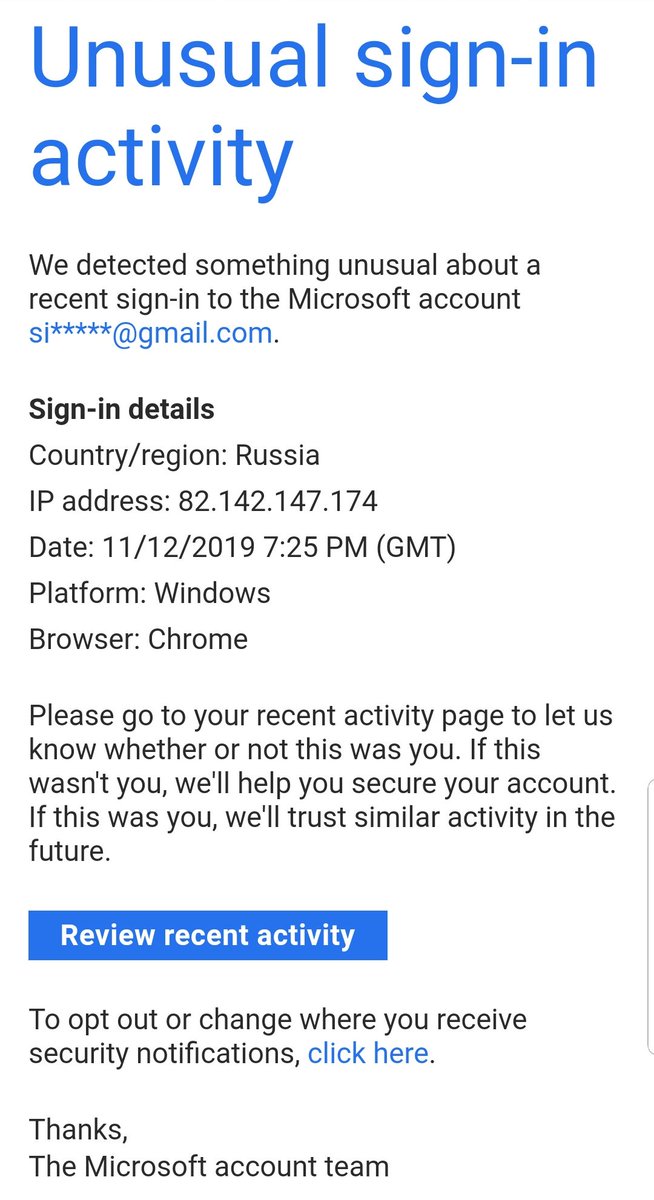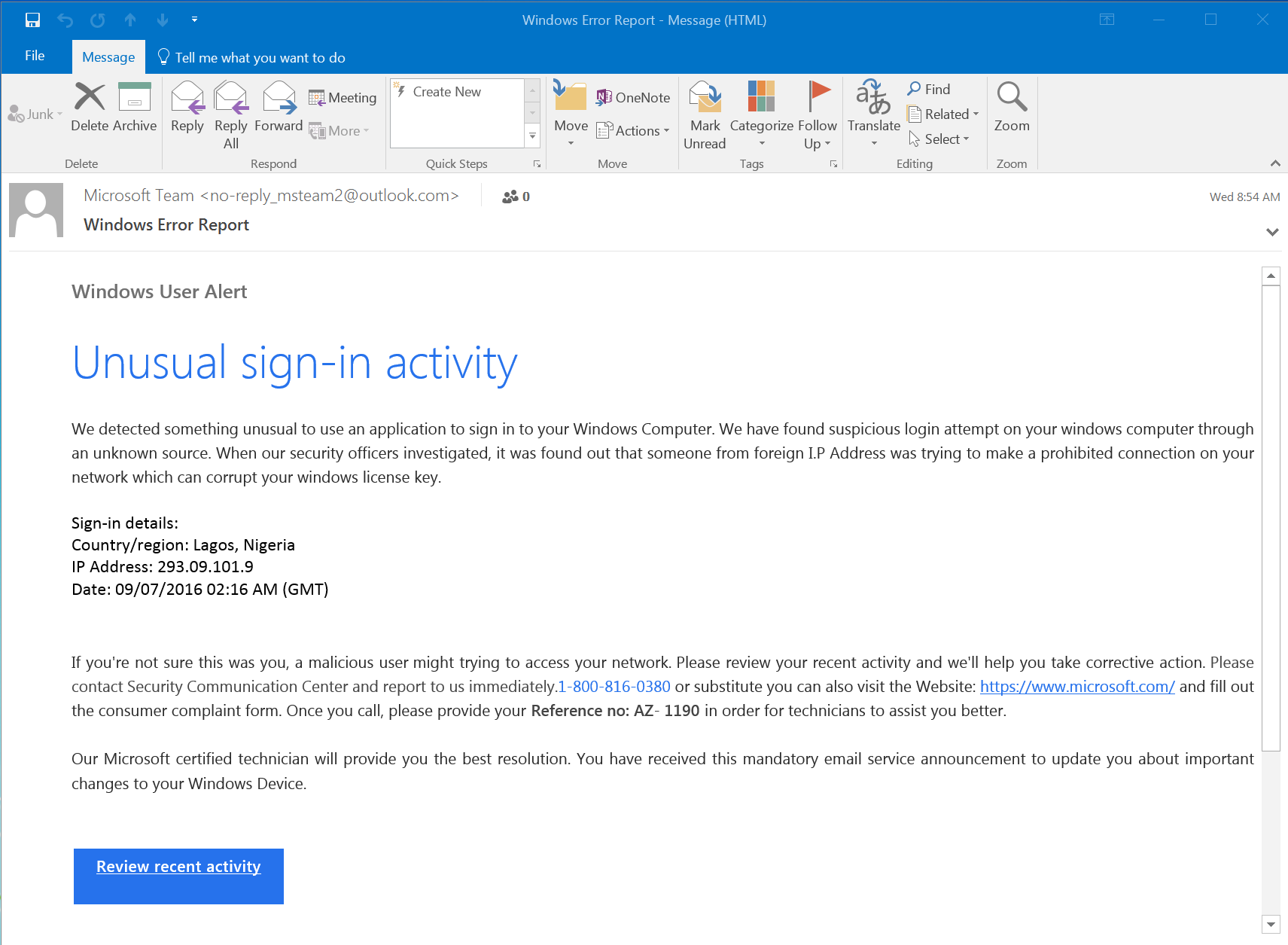
Once the user enters the credentials, almost every time the user will end up on the error page.

This is the only way to spot the difference. To identify if this is a phishing email or an actual email, it is very important to see the link that is used for the landing page. These credentials obviously include the mail ID and the password. Once the receivers click on the review recent activity button, the user lands on a fake landing page where the user is required to enter his credentials.

Once the user has received such email, there is a button attached to the email and to make it look authentic the sender address looks authentic too. According to BC the new phishing campaign has been designed in a way that it seems almost identical to the actual unusual sign-in activity email. Since the unusual sign-in activity emails are regularly sent to the users to help them keep eye on any un-usual sign-in from a different location or browser this email is quite predictable. Recent unusual sign-in activity is one of the most well-designed phishing campaigns targeting Microsoft users and it is a true example of why phishing campaigns are effective.

Most of these campaigns are successful because they are very well designed which makes it very difficult for the user to spot any possible issue. Regardless of the fact that they are almost a decade old, these campaigns are still one of the most effective ways to hack an account. Phishing campaigns are becoming more and more common with every passing day.


 0 kommentar(er)
0 kommentar(er)
